15+ Sample Procurement Strategic Plan
-
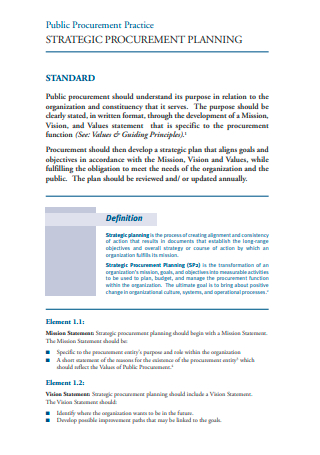
Public Procurement Strategic Planning
download now -
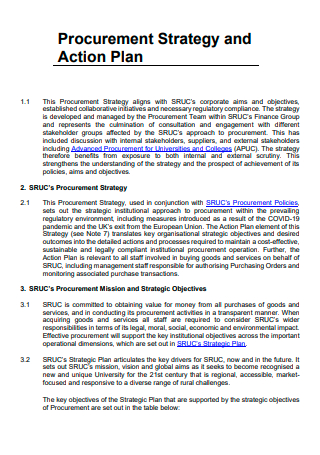
Procurement Strategy and Action Plan
download now -
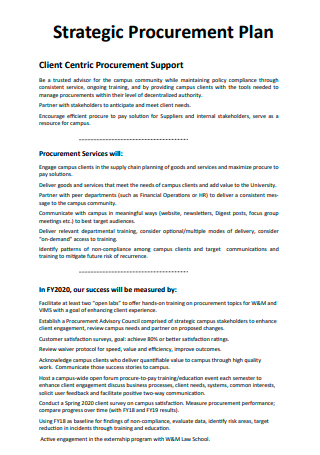
Basic Procurement Strategic Plan
download now -
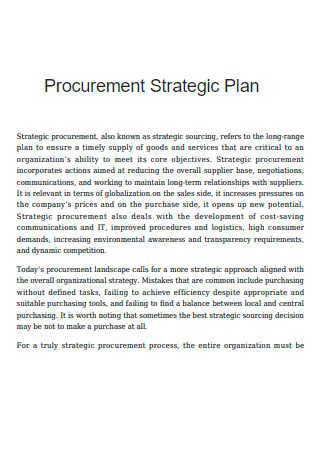
Procurement Strategic Plan Example
download now -
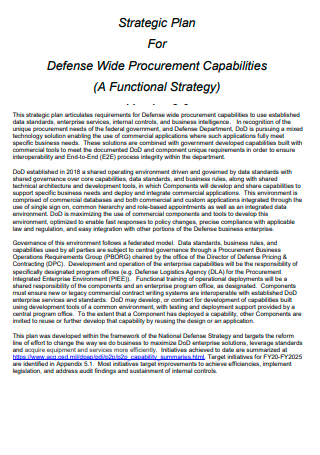
Defense Procurement Strategic Plan
download now -

Procurement Category Strategic Plan
download now -
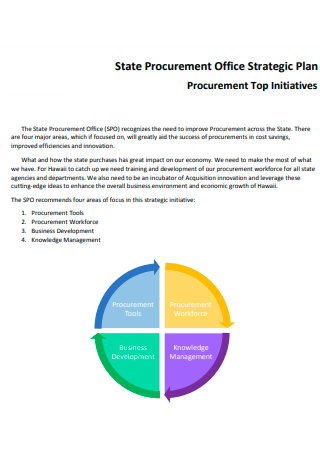
Procurement Office Strategic Plan
download now -
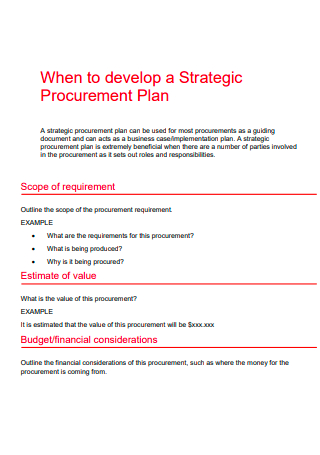
Simple Procurement Strategic Plan
download now -
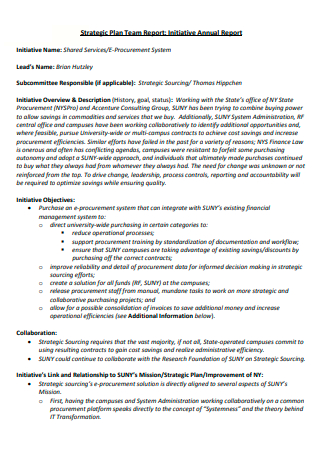
E-Procurement Strategic Plan Team Report
download now -
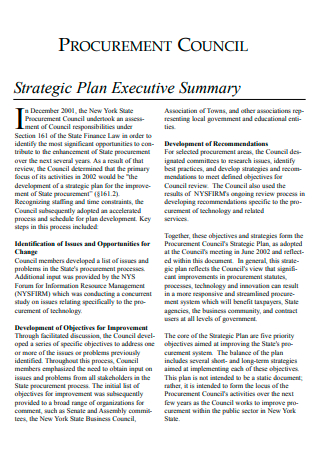
Procurement Council Strategic Plan
download now -
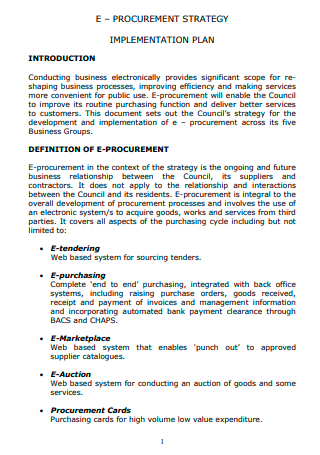
E-Procurement Strategy Implementation Plan
download now -
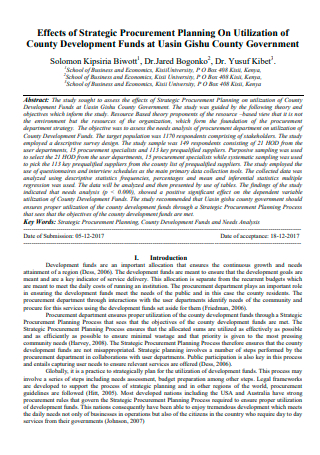
Effects of Procurement Strategic Plan
download now -
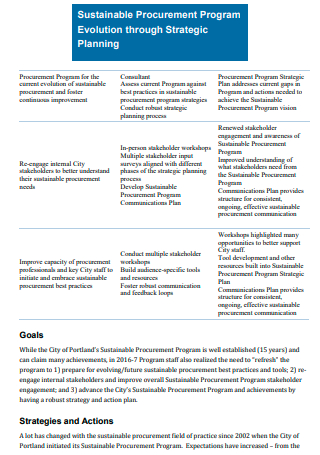
Sustainable Procurement Program Strategic Planning
download now -
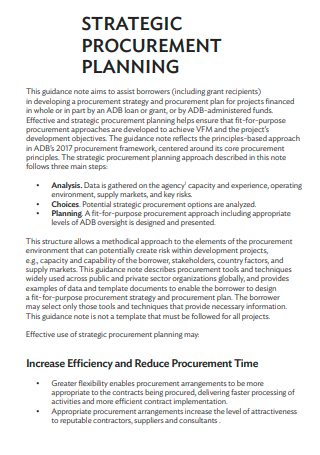
Standard Procurement Strategic Planning
download now -
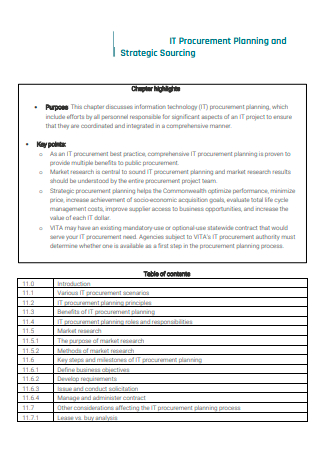
IT Procurement Strategic Sourcing Planning
download now -
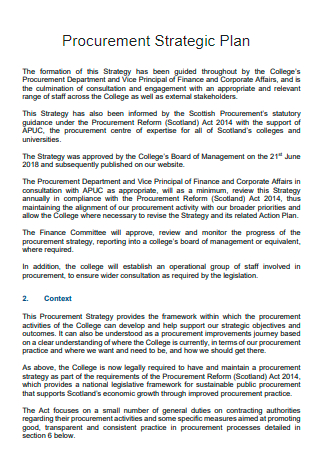
Formal Procurement Strategic Plan
download now
FREE Procurement Strategic Plan s to Download
15+ Sample Procurement Strategic Plan
What Is a Procurement Strategic Plan?
Components of a Procurement Strategic Plan
Goals of Strategic Procurement
How To Develop a Successful Procurement Strategic Plan
FAQs
What are the steps in procurement planning?
What are examples of procurement strategies?
What is the importance of strategic procurement?
What Is a Procurement Strategic Plan?
A procurement strategy, or strategic sourcing, is a long-term plan that details a cost-effective process of acquiring supplies from vendors that deliver quality products and services on assigned times and dates while abiding with purchasing terms and conditions. The procurement strategic plan depends on several factors like the procurement timeline, budget availability, total cost of ownership, and risk assessment, among others. The purpose of creating a procurement strategy plan is to lessen purchases, mitigate risks, and organic expansion. Strategic procurement utilizes action plans intending to reduce the number of supplier bases, negotiations, and communications to maintain long-term relationships with quality suppliers. Preparing the procurement strategic plan is relevant to suppliers and buyers. For purchasers, it opens up the doors to potential suppliers. Meanwhile, the selling party can take advantage of pressures in the marketplace to increase prices. Strategic procurement also deals with developing IT communication systems, improving procedures and logistics, increasing consumer demands, improving environmental awareness, aligning with transparency requirements, and competing in a dynamic environment.
According to the data gathered by the World Bank from the global public procurement database, global public procurement covers an average of 13 to 20 percent of the GDP. Global expenditure when it comes to procurement has an estimated amount of nearly 9.5 trillion US dollars. With the number of procurement transactions globally, exchanging resources have amounted to a large amount.
Components of a Procurement Strategic Plan
There is no one format for the creation of a procurement strategic plan since different companies utilize the document. However, some essential components must be put into consideration when creating the procurement strategic plan. Since many organizations procure goods and services from other institutions, the document must have the following information for a comprehensive plan. The section below contains the components and their definitions.
Goals of Strategic Procurement
Strategic procurement focuses on potential leverages of the organization from insights coming from spending and expenses data, suppliers, and markets that identify new scope for long-term valuation. These goals differ from one organization to another, depending on their strategic goals. For companies and industries to understand strategic procurement, they must be familiar with the goals that come with it. Below are some goals of strategic procurement you can incorporate into the procurement strategy plan.
How To Develop a Successful Procurement Strategic Plan
Creating a robust procurement strategic plan helps a company identify possible saving possibilities, reduce unconventional spending, and guarantee policy compliances. There are different ways to tackle a procurement strategy plan, depending on the organization and industry. Below are the steps in creating a successful procurement strategic plan for your company
-
1. Analyze Organizational Spending
The initial step in creating a procurement strategy plan is to analyze what the company buys and its spending pattern in different departments. You can do this by conducting procurement and spending analysis by obtaining information from internal stakeholders, supply partners, and other entities that are present in the procurement process. The spending analysis must be the basis for all work procurement decisions and actions, serving as the foundation for a procurement strategy. An organization can utilize the total cost of ownership or TCO to identify and analyze overlooked or unclassified expenditures in addition to the initial purchase.
-
2. Determine the Business Needs
A procurement strategy plan produces the best outcomes through an understanding of current and future organizational needs. Through the needs analysis, the person working on the procurement strategic plan can align and prioritize strategies across other organization functions and business goals. A company meeting or discussion about recurrent activities and questions about obvious spending methods help to reveal possible saving strategies. A category positioning matrix allows the organization to identify business requirements to develop a procurement strategy.
-
3. Assess the Market Conditions
After an internal analysis to identify the business needs of an organization, it is time to do an external analysis focusing on supply markets and their status. The data comes from direct suppliers and supplier markets. To guarantee that information is relevant, the company must ensure that the gathered information is always recent. There are different methods that an organization can utilize, including scope analysis and Porter’s five forces.
-
4. Set Clear Objectives and Define Policies
After identifying business needs and assessing market conditions, the company must set out a clear vision to achieve. The data from the previous step is the basis to determine the procurement process. Set the information in an order that represents which ones are most impactful. Using SWOT analysis identifies current procurement functions in the organization. After identifying the objectives, create a list of the best practices of procurement the company utilizes. Adapt the existing procurement policy to fit the organizational needs and modify the procurement policy for the organization using the SWOT analysis. The procurement policies established by the company are a means to guide everyone to fair practices involving procurement procedures, including remedies and violations.
-
5. Outline a Procurement Strategy
After collecting and analyzing all necessary information, you can now proceed to develop a procurement strategy. It must list down the goals and tactics to achieve these goals. These goals must follow the SMART-goal setting process. The strategic plan must indicate the methods you plan to use to achieve the defined goals while incorporating new ideas to push for innovations and possibilities.
-
6. Develop Digital Procurement Strategies and Execute, Manage, and Refine the Strategy
Through data collection from previous steps, you can create a digital procurement strategy through editing or revising procurement technologies, processes, strategies, support systems, talents, and skills. The digital procurement strategy allows organizations to spend time with suppliers to form strategies and deploy resources to obtain outside gains to make procuring easier. After completing the digital strategy, the next step is to execute it. It also demands the involvement of other departments, receiving their feedback to track and measure the progress and success of procurement processes.
FAQs
What are the steps in procurement planning?
There are different steps to keep in mind when initiating procurement planning for an organization. First, the company must identify the need for procuring goods or services then proceed to research possible vendors or suppliers. The next step is to review bids to determine the final supplier, determine the type of contract, and outline risk management procedures. Afterward, the company can start the purchase order process, identify possible project restraints, and contact suppliers for further evaluation.
What are examples of procurement strategies?
There are various procurement strategies that businesses can use for their organization. Some of these include simplifying the supply chain, consolidating supplier lists, including departments in the organization’s supply database, establishing analysis capabilities, and managing risk tendencies.
What is the importance of strategic procurement?
There are different advantages in utilizing strategic procurement in an organization. One of the prominent benefits involves cutting down expenses. It also allows companies to align their sourcing components with business goals to increase efficiency and minimize the presence of risks in the supply chain. It also allows organizations to form positive and long-lasting relationships with suppliers.
Procurement strategic plans are necessary for an organization to regulate the procurement of goods and services that it receives. Having a procurement plan in place helps the company to have an accurate representation of their expenses and formulate possible strategies and tactics to reduce costs while keeping high-quality products for the consumption of the general market. In the words of Confucius, “A man who does not plan long ahead will find trouble at his door.”. Prepare your procurement strategic plans today by downloading the samples available from the article above.
